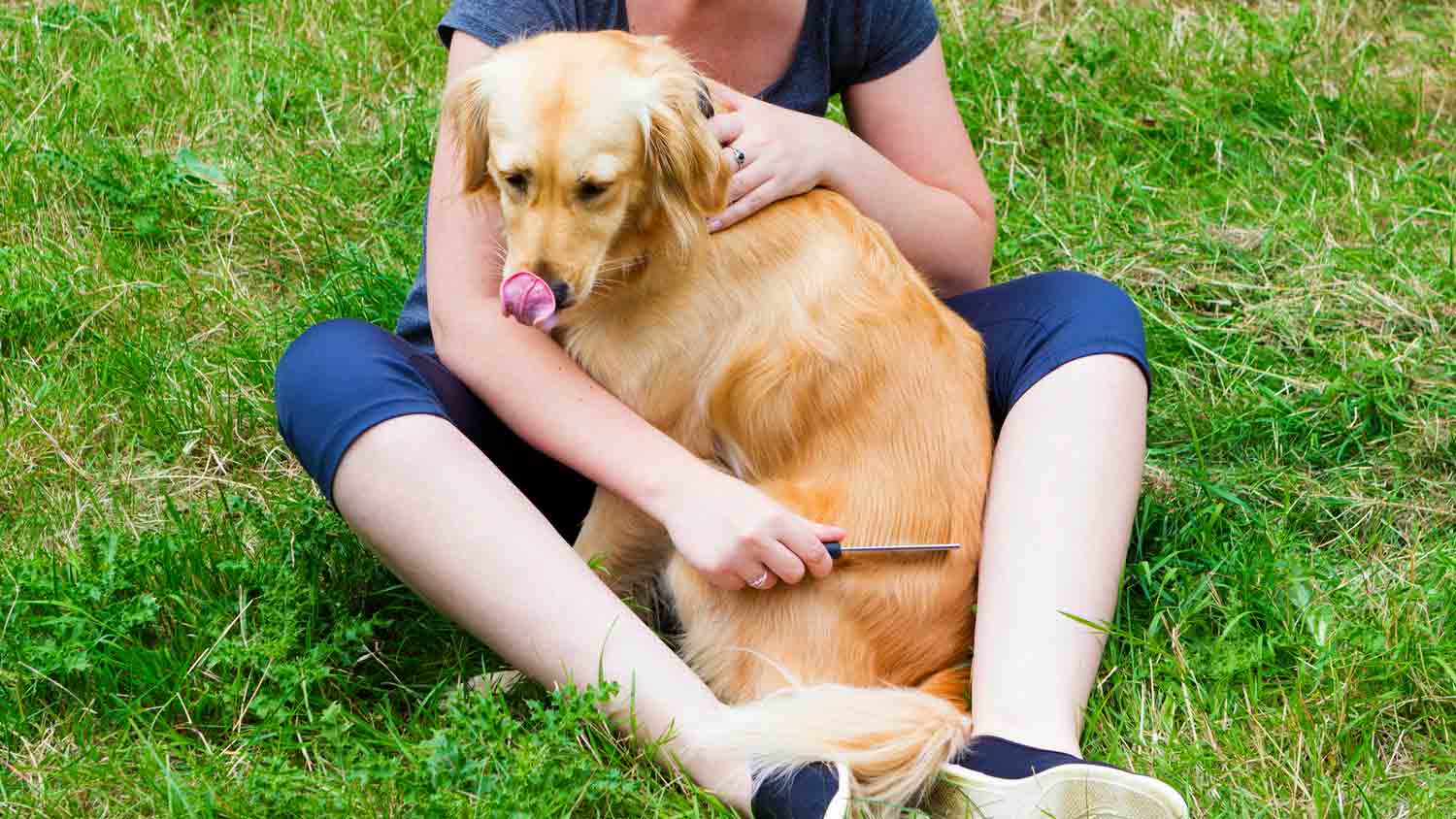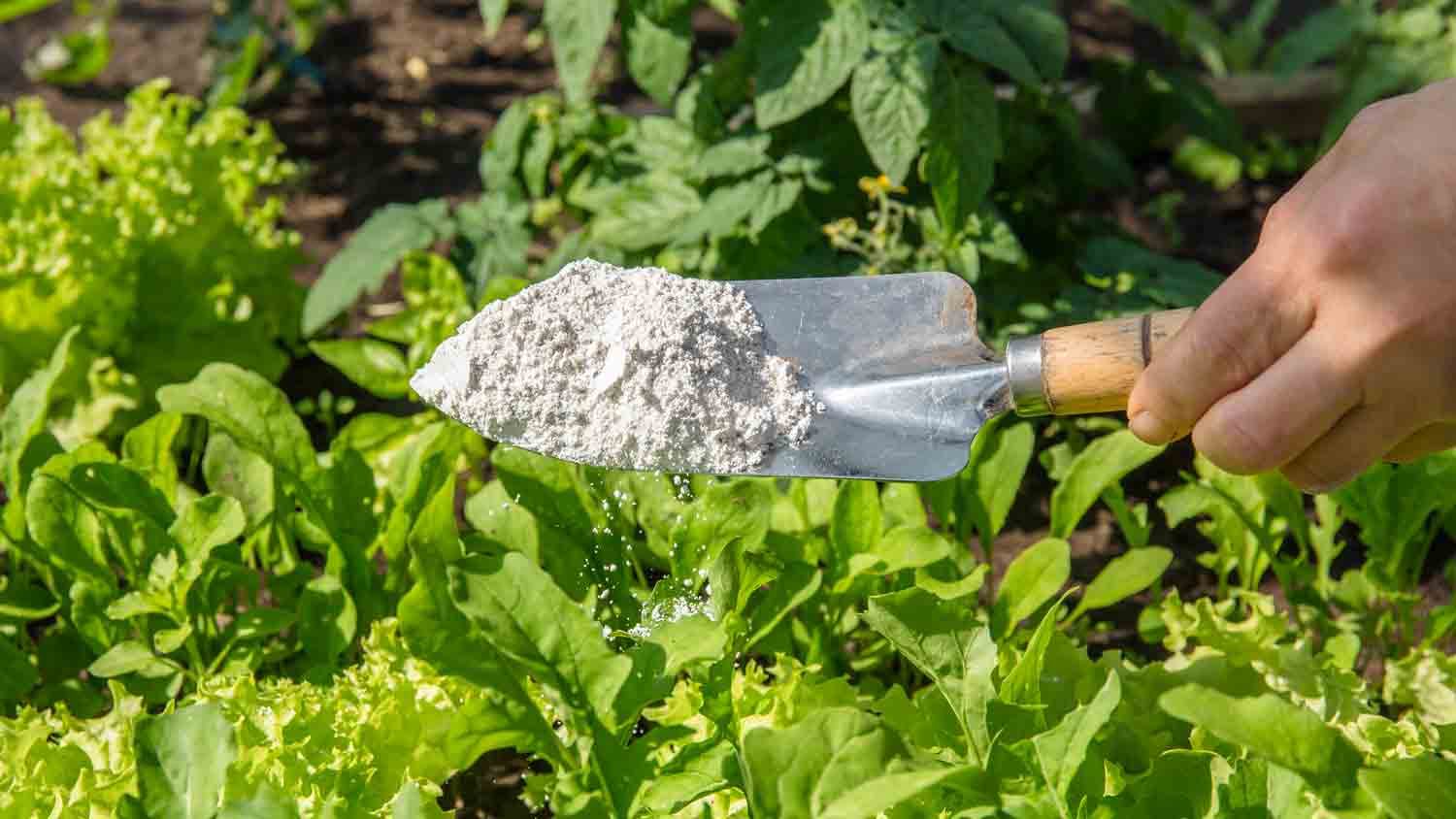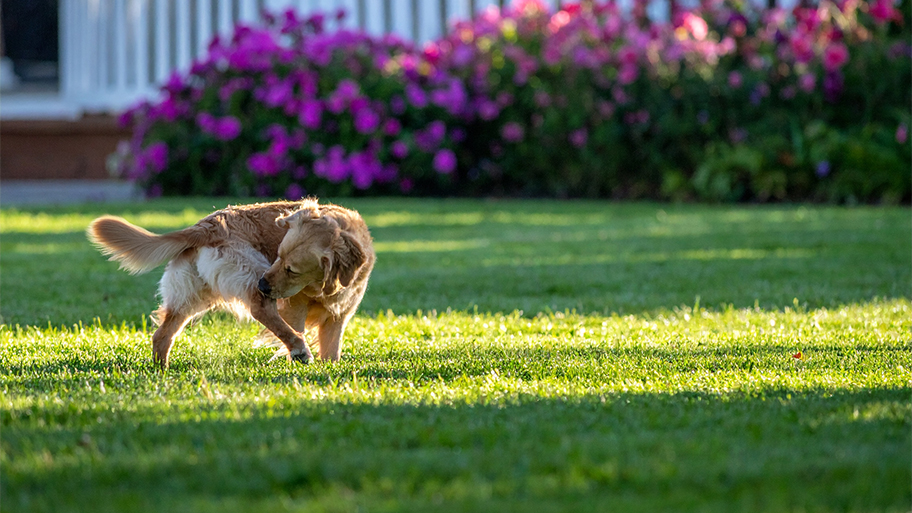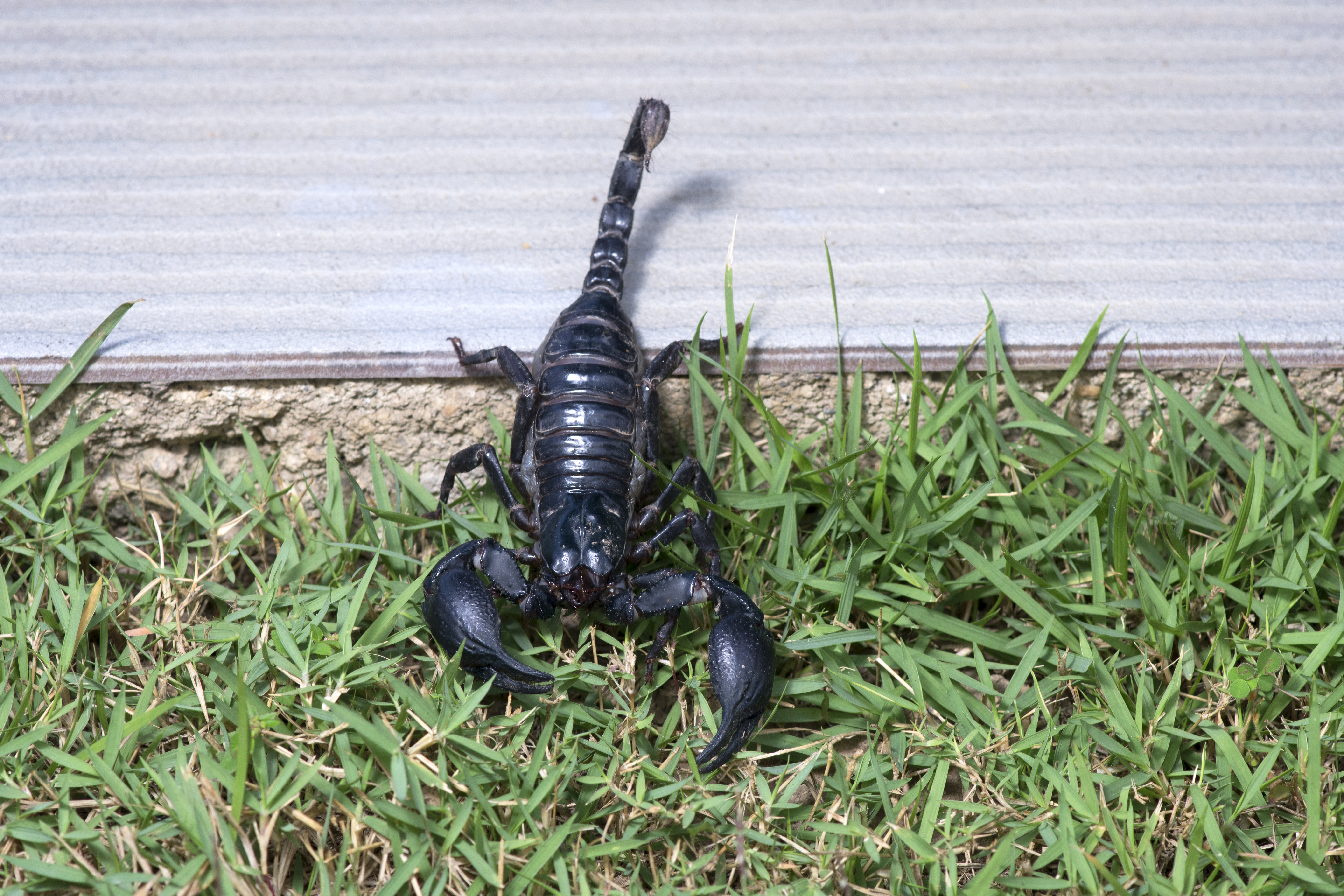
Whether you have bugs, bats, or rodents invading your home, you’ll want to contact an exterminator quickly. Find out how much pest control costs in Columbus, OH.
Get your lawn flea-free


Professional flea extermination costs around $75 to $400, but it targets every stage of the flea life cycle for longer-lasting results.
DIY methods cost less—about $5 to $30—but they often offer only temporary relief, which can lead to recurring infestations.
You’ll need to buy and correctly apply treatments such as diatomaceous earth, beneficial nematodes, or flea-killing sprays, all of which come with safety risks if misused.
Hiring a local exterminator ensures harmful products are handled safely, reducing potential hazards to your pets, children, or garden.
Once fleas are eliminated, professionals can advise on preventative landscaping tips to keep them from coming back.
You’re enjoying a quiet afternoon in the privacy of your backyard when you realize you aren’t so alone after all. In reality, you’re surrounded by countless fleas who have decided to make your yard their new home (and started feasting on your legs and ankles). Luckily, you’ve got a few options to evict them—with or without the help of an exterminator. Here’s how to get rid of fleas in your yard and give your itchy skin a rest.
Fleas can show up in your yard for a number of reasons. If you have pets, for example, they could get fleas from another animal at the park, at daycare, or out in the wild. When your pet returns to your yard, the fleas could jump off and make themselves at home.
Even if you don’t have pets, your yard can still attract fleas. Rodents, birds, and other wildlife might visit your property looking for water or food—and if they’re carrying fleas, the pests could take up residence in your yard. Fleas prefer shady, protected spaces, so your yard may be particularly attractive if there’s tall grass or overgrown vegetation.
It’s also possible for people to carry fleas. If someone visits your home with fleas attached to their clothing or shoes, you could end up with fleas in your yard.

Fleas are tiny, but they’re still visible to the naked eye. Even if you don’t actually see fleas, you might feel their bite—especially around your ankles. Here are some common signs that there are fleas in your yard:
Visible fleas in your yard, on your body, or on your pet
Itchy areas on your skin or your pet’s skin
Excessive scratching by your pet
Red or irritated patches on your pet’s skin
Still not sure? Put on a pair of long white socks and walk through your yard. If there are fleas, they’ll probably jump onto the socks.
There are a few ways to get rid of fleas without hiring a professional exterminator, including with store-bought spray treatments and natural products. No matter which method you choose, make sure to follow the manufacturer’s instructions carefully.
Spraying your yard with a flea control product is one way to kill multiple kinds of lawn pests, including fleas and ticks. Available at home improvement stores, flea sprays are effective and easy to use.
However, certain flea treatments for your yard may harm pets, wildlife, and beneficial insects (like bees). When shopping for flea sprays, look for products that contain spinosad—an ingredient that will kill fleas but is less toxic to bees once it dries, according to a study published by the National Library of Medicine.
So, when is the best time to spray for fleas? To prevent the chemicals from hurting your grass, you should aim to apply these treatments in the early morning or evening (in other words, when the sun isn’t directly overhead). It’s also best to use flea sprays on clear days—at least 24 hours before and after rain, if possible.

Diatomaceous earth (DE) is a pest control powder made from fossilized aquatic organisms. To banish fleas from your yard, you can sprinkle DE throughout your lawn. When fleas (or other insects) pass over it, the powder’s small, sharp fossils damage their exoskeletons and kill them.
Like with flea spray treatments, it’s important to follow the label instructions when using DE. In particular, avoid sprinkling it near flowers or fruiting trees, where it could pose a threat to bees or other insect pollinators.
If you’re looking for a safe and natural way to kill fleas, consider using beneficial nematodes. These microscopic worms are parasitic to fleas but won’t harm helpful insects (such as bees and earthworms). Plus, they aren’t dangerous to humans or animals.
You can find beneficial nematodes at hardware stores and nurseries. You’ll mix the nematodes with water and apply them to your lawn through a watering can or the sprayer setting on your garden hose (applications can vary, so follow the instructions on the label).
You’ll need a two-pronged approach to keep fleas out of your yard. First, you should focus on deterring the pests themselves. But you’ll also want to discourage flea-carrying wildlife from coming onto your property. Here’s how to achieve that.

Since fleas seek out tall grass for shelter and protection, a good way to keep these pests at bay is by mowing your lawn regularly. The best height depends on the type of grass and your climate, but in most cases, the ideal mowing height is 2 to 3 inches. By following a regular mowing schedule, you can keep your lawn healthy and make it less enticing to fleas.
Thatch is a layer of living and dead plant material—like leaves, stems, and roots—that accumulates on your lawn. If you don’t remove thatch, it can destroy your grass and attract all kinds of pests, including fleas. Fortunately, you can avoid these issues by dethatching your lawn every one to three years (depending on the type of grass).
Tall, unkempt grass isn’t the only place that fleas like to live. They can also set up shop in piles of leaves, wood, or other clutter in your yard. On top of that, these kinds of messes may lure wild animals onto your property (who may bring fleas with them).
Like clutter, standing water can also attract local wildlife to your home. To prevent this, make sure to empty any water from kiddie pools, pet bowls, bird baths, wheelbarrows, and similar objects in your yard.
Fleas tend to avoid sunlight and lurk in dark or shadowy areas, such as tall grasses and wood piles. By trimming the trees and shrubs on your property, you can introduce more sunlight into your yard and deter fleas.

The smell of cedar naturally repels fleas (and ticks, too). Adding cedar mulch around your decks, patios, porches, fences, and play areas is a simple way to protect your yard from fleas.
Did you know there are certain herbs, flowers, and plants that repel pests? Lemongrass and chrysanthemums can both keep insects away, but they can be poisonous to pets. If you’ve got a dog or cat at home, consider planting pet-friendly pest-repelling plants instead. Examples include basil, sage, and rosemary.
On average, hiring a professional flea exterminator costs $75 to $400, depending on the extent of the infestation and the number of treatments required. Meanwhile, taking the DIY approach to flea removal costs between $5 and $30. If you have a few basic tools and materials, you can even make a DIY flea trap for free.
However, DIY extermination methods aren’t always enough to fully eliminate an infestation. That’s because some store-bought sprays and natural remedies can only target fleas at a certain part of their life cycle. To ensure you eradicate all fleas in your yard (no matter what life stage they’re in), it’s best to hire a local flea control company.
Fleas account for a portion of the 23.5% of visits dedicated to other insects. Unlike most pests, flea infestations require fast and effective treatment due to how quickly they reproduce. Exterminators also commonly treat cockroaches, ants, bees, wasps, and hornets.
This company does it right. Firstly, I want to say that Landan was a joy to work with. He was so kind, transparent, and had everything under control. His entire team showed up ready to work and they were all very respectful of the fact that we were in an office space. A little backstory – we...
Our office has a new lease on life, thanks to Custom Paint Jobs LLC. Outstanding work!
Window Depot did an amazing job on my deck. I wasnt sure what I wanted to do, but their composite decking was affordable and will last a long time. I am excited to have family over, and I am no longer embarrassed by my backyard. Jeff and the ground crew were polite, respectful, and caring for...
Storms Mobile Welding was great to work with. They were prompt, professional and did an overall excellent job on the project. I highly recommend.
AFS was excellent from start to finish. Jess, the sales associate, was fantastic...very knowledgeable and very professional. The installation crew was excellent. I couldn't be more pleased with the process. Best of all, my new floor looks fantastic!
We used Unique Hardwood Floor LLC three years ago to work on the floors of a 70 year old home that needed a great deal of work. Some floors needed repairs, some were replaced and others just needed to be refinished. It was a complicated job as they needed to blend the old and the new to...
While Naaman and Mike were very professional and amicable to work with, there were issues in this project that makes giving a higher rating impossible. We had several communications issues that delayed completion. The roofers accessed the property without communicating with me. Just showed up...
Mr. Pooner's company came out gave us an estimate and promised installation within 10 weeks from receipt of signed contract and deposit. Mr. Pooner obtained all the necessary licenses and began work promptly. His company's workmanship is excellent. The garage door is mounted on steel...
My 2nd floor furnace was only working sporadically and the warranty company sent Air Fast to fix the issue. They came out and shut off the furnace completely. Said they would be back the next day when they had a new flame sensor... 4 more days passed with me calling them multiple times a day...
They called 15 minutes before arrival to announce that they were coming and arrived on time. Immediately they saw the broken springs and replaced them very quickly. Jeff suggest that I put on a rope to the manual switch to operate it more easily if necessary. I explained that my old door...
From average costs to expert advice, get all the answers you need to get your job done.

Whether you have bugs, bats, or rodents invading your home, you’ll want to contact an exterminator quickly. Find out how much pest control costs in Columbus, OH.

If you have a serious rodent problem, you may need to know the cost of hiring a rat exterminator. We can help you estimate prices and control costs.

Moth infestations can cause damage to items in your home. Learn how much moth extermination costs and ways to save in this informative guide.

Fleas and ticks are irritating and can cause health issues, especially for pets. Create a homemade flea and tick killer for your yard to keep your home safe.

Looking for budget-friendly bedbug tips? Learn how to get rid of bedbugs without an exterminator by using DIY tactics with natural and pesticide products.

Scorpions are creepy pests that you definitely don’t want near your living space. Find out how to keep scorpions away from your house.